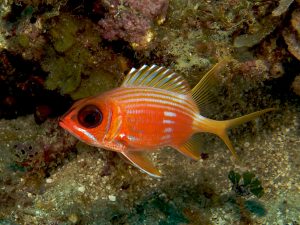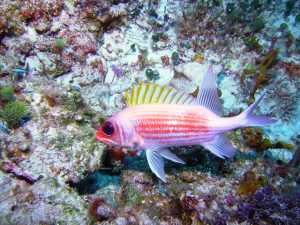The fish species Holocentrus adscensionis, also known commonly as the squirrelfish or soldierfish, is found in the family Holocentridae. There are around 70 different species of the tropical reef squirrelfish. They have large eyes to help them see at night, are colorful (typically red and gold) with spiny elongated fins. While they can grow up to two feet in total length, they commonly do not surpass 10 inches. Squirrelfish are found distributed throughout the warm tropical waters of the Atlantic Ocean around the Caribbean, Bahamas, Florida, Bermuda, Turks and Caicos, and the Gulf of Mexico, where they typically remain at depths four feet to 40 feet where the waters are still warm but can go up to around 250 meters deep.


